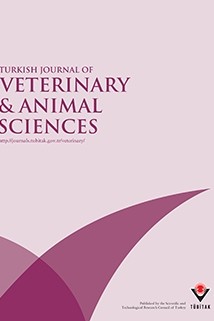
Turkish Journal of Veterinary and Animal Sciences
Yazarlar: AYHAN BAŞTAN, SEÇKİN SALAR, MEHMET CENGİZ, İSFENDİYAR DARBAZ, MÜRŞİDE AYŞE DEMİREL, DOĞUKAN ÖZEN
Konular:-
Anahtar Kelimeler:Heifers,Regression model,Risk factors,Subclinical mastitis
Özet: The aim of this study was to determine the risk factors for subclinical heifer mastitis and to create a model that can predict the prevalence of subclinical mastitis of pregnant heifers in farms in Turkey. Lacteal secretion samples were taken from 439 pregnant (6-9 months) heifers and bacteriological analyses were performed. In this study, 37.47% of the samples were determined to be infected. In lacteal secretion samples, the isolation rate of coagulase-negative staphylococci and Staphylococcus aureus was 44.83% and 35.71%, respectively. The incidence of mastitis was calculated as 42.87 ± 4.12%. An eight-question survey was conducted. Using the data collected, a multiple linear regression analysis using backward stepwise method was used to predict the incidence of mastitis. According to the multiple regression model, the number of animals, well-balanced ration, separating the cows in dry periods into different boxes, and contact of heifers with older cows significantly contributed to the model (P < 0.05). Coefficient of determination (R2) for the model was estimated at 93.8%. Today, with the knowledge of risk factors for pregnant heifers, changes in management would be beneficial to prevent mastitis. Additionally, this study showed that predictive models for the incidence of mastitis could be conducted through comprehensive future studies.